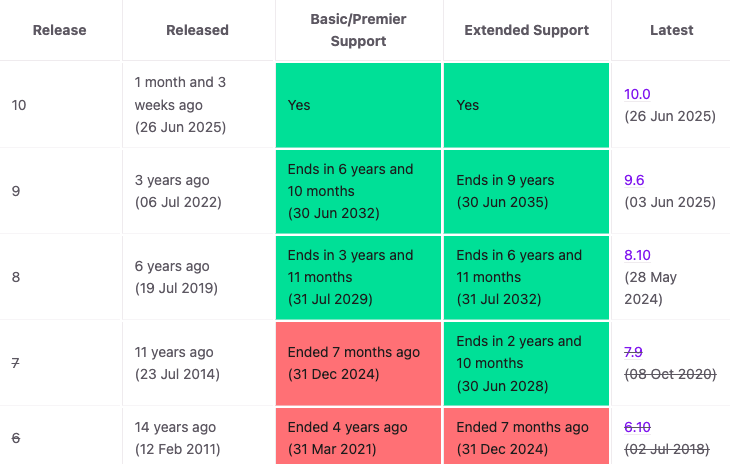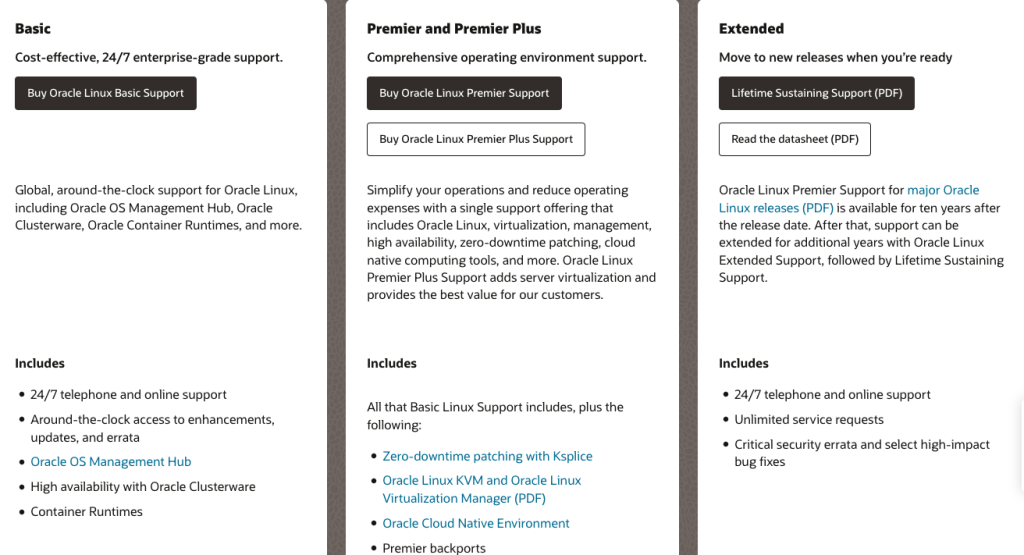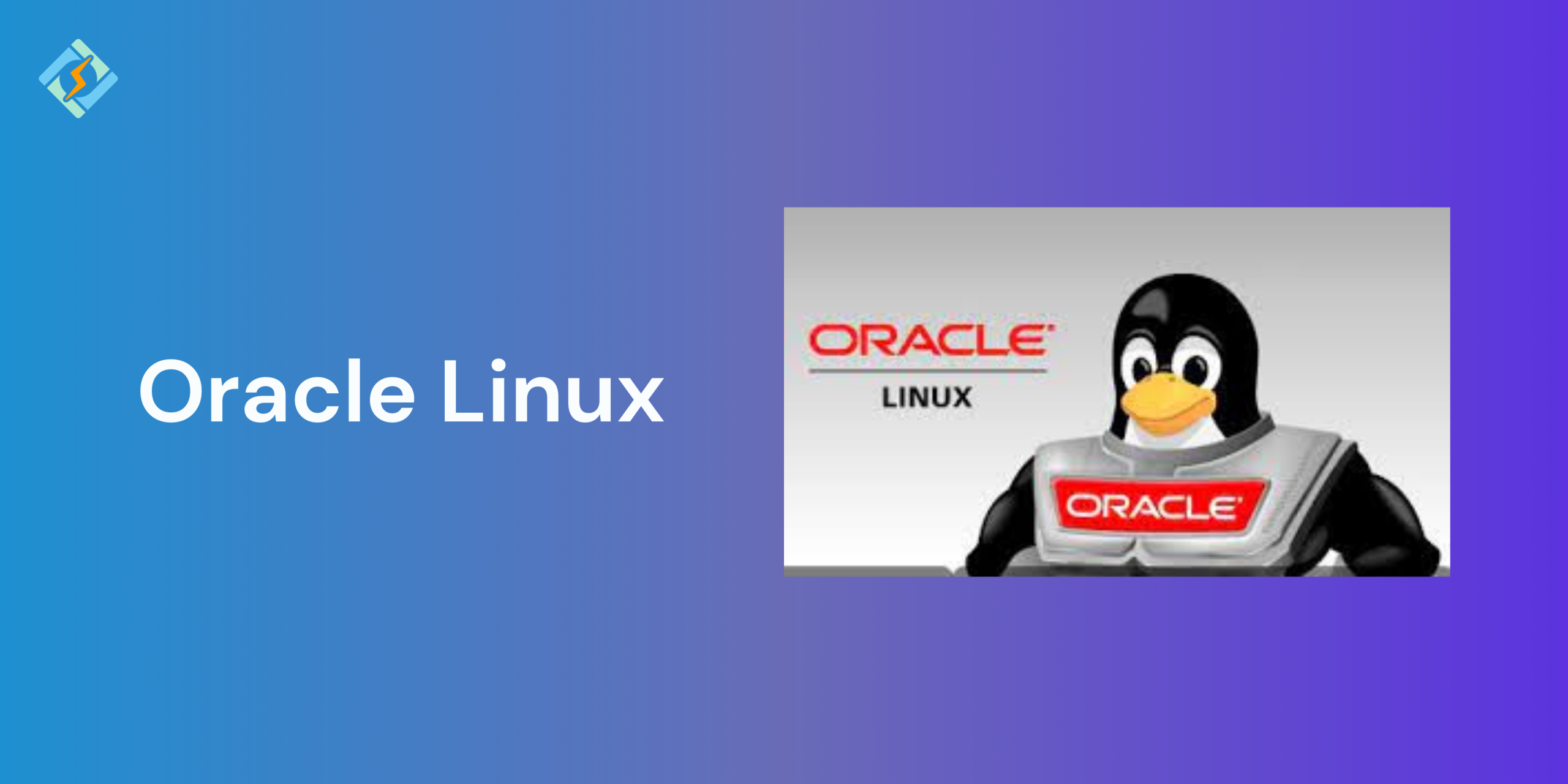It’s 2025, and developers target Linux for their desktop development Projects. Why?
Simply because Oracle Linux stands out! It provides a unique Linux experience that includes all the necessary tools to deploy, optimize, and manage applications, whether on-premises, in the cloud, or at the edge. It offers enhanced security and simplified management, and is specifically designed to handle demanding workloads at cloud scale.
There’s much more to this powerful Linux Distribution, and we’re here to explore how it’s better than CentOS or other distributions, and provide a complete installation guide, benefits, and Use Cases. But First understand what it is!
What is Oracle Linux?
The Oracle Linux operating system is designed for open cloud infrastructure. It offers top performance, scalability, reliability, and security for enterprise SaaS and PaaS workloads, as well as traditional enterprise applications.
It is a fully application binary compatible alternative to Red Hat Enterprise Linux. Developed by Oracle Corporation, Oracle Linux is an open-source operating system that has been customized since its 2006 launch to support various business and enterprise applications.
Oracle Database and all of Oracle’s other software, services, and solutions are created on and operate in production on Oracle Linux.
Get exclusive access to all things tech-savvy, and be the first to receive
the latest updates directly in your inbox.
Besides, it features an Unbreakable Enterprise Kernel (UEK), which delivers excellent performance and scalability, along with strong security measures that comply with strict enterprise standards.
Latest Release:
10.0 -(26 Jun 2025)

Key Features of Oracle Linux
Oracle Linux software 10 offers strong security and outstanding performance for business flexibility and high-demand tasks at cloud scale. Its key features consist of updated cryptographic functions, improvements in developer tools, and new solutions for reliable infrastructure. These upgrades allow organizations to create and operate applications more quickly and securely in distributed and multicloud settings.
- Affordable: Mostly free, which helps lower overall costs.
- Dependability: Oracle is very reliable, reducing the likelihood of frequent crashes.
- Safety: It features robust protections against hackers and threats, ensuring data security.
- Efficiency: Operates quickly, especially when managing large business tasks.
- Excellent Customer Support: Users get great help when using Oracle Linux software.
- Active Community: A lively community provides continuous support and updates.
- Compatibility: Works with various file formats and standards for smooth integration.
- Easy Management: IT experts find it straightforward to manage and troubleshoot with user-friendly tools.
- Cloud Computing: Oracle Linux is designed to integrate seamlessly with cloud services, such as Oracle Cloud Infrastructure.
- Virtualization: Oracle Linux includes native support for virtualization technologies like KVM and Xen.
- Development: Linux Oracle offers various tools and resources for software development and testing.
Here’s The Latest Oracle Linux Pricing Plans:

Oracle Linux vs Other Linux Distributions
| Feature / Aspect | Oracle Linux | RHEL (Red Hat Enterprise Linux) | CentOS (CentOS Stream) | Ubuntu (LTS Versions) |
|---|---|---|---|---|
| Base | Derived from RHEL | Original enterprise distribution | Based on RHEL (now rolling release with CentOS Stream) | Debian-based |
| Cost | Free to use, paid support available | Paid subscription needed for updates & support. | Free to use (community-driven, although it is less stable than it was before). | Free (paid enterprise support via Canonical) |
| Kernel Options | Two kernels: RHEL-compatible kernel & Unbreakable Enterprise Kernel (UEK) | Single official RHEL kernel | Follows RHEL kernel updates | Single kernel, community-driven |
| Performance | Designed specifically for Oracle workloads, databases, and cloud environments. | Enterprise-grade, stable & widely used in corporations | Good for testing & dev, but less enterprise-focused now | Excellent for desktops, dev environments, and cloud |
| Security | Ksplice (zero-downtime kernel patching), SELinux enabled | Strong security policies, SELinux enabled | Follows RHEL security, but updates can be slow. | AppArmor & SELinux options, regular security updates |
| Support | Enterprise-level support from Oracle, integration with Oracle Cloud | Strong vendor support from Red Hat | No official support (community only) | Follows RHEL security, but updates can lag |
| Package Manager | YUM & DNF | YUM & DNF | YUM & DNF | APT |
| Cloud Integration | Optimized for Oracle Cloud Infrastructure (OCI) | Widely supported on AWS, Azure, GCP | Enterprises using Oracle products, mission-critical workloads, and hybrid cloud | Strong support on AWS, Azure, GCP |
| Best For | Enterprises using Oracle products, mission-critical workloads, and hybrid cloud. | Large corporations, data centers, enterprise IT | Developers, testing, non-critical servers | Developers, desktop users, startups, and cloud-native apps. |
| Community | Smaller, Oracle-driven community | Strong enterprise ecosystem | Strong but shifting due to CentOS Stream changes | Very large and active global community |
| Learning Curve | Moderate (similar to RHEL but Oracle-specific tweaks) | Moderate (enterprise-focused) | Easier for those familiar with RHEL | Beginner-friendly, widely documented |
How do Ubuntu and Oracle Linux differ?
Ubuntu and Oracle Linux are two well-known Linux distributions that have been evaluated across seven different categories. Ubuntu is known for its strong security features, including a default firewall and built-in security measures, while Oracle Linux prioritizes the security of its software by default. Both Ubuntu and Oracle have a long history of development, spanning over a decade, and they share similar installation processes. However, Ubuntu stands out in the ease-of-use category due to its inherent compatibility.
Both Ubuntu and Oracle provide their own online documentation, with Canonical and Oracle offering official resources along with third-party options. While Ubuntu’s documentation is quite comprehensive, Oracle Linux’s documentation tends to be more focused on information available through forums and various websites.
Technical support is a critical aspect of using Linux, as it can be more challenging than operating systems like Windows and macOS. Ubuntu provides a centralized and well-documented support center, while Oracle Linux offers paid official support. In terms of cost, Ubuntu stands out because it is completely free and includes all its features.
Customization plays a significant role in the appeal of Linux, as many users, developers, administrators, and coders prefer working with Linux and its various distributions. Ubuntu provides an additional layer of personalization and customization, enabling users to tailor their work environment to their preferences. Conversely, Oracle Linux comes with more built-in options, including GNOME and KDE desktop environments.
Hosting plans are also a vital consideration for Linux users, especially for businesses that rely on virtual machines and VPS services. Ubuntu is a dependable choice for hosting, with 20% of websites running on it, while Oracle Linux excels in technical aspects due to its compatibility with Oracle Java and its excellent integration with Oracle VM VirtualBox.

Oracle Linux Installation Guide: How To Begin
Since 2006, Oracle Linux has been free to download, use, and redistribute. It includes free source code, binaries, updates, and is permissible for production use.
You can download Oracle for free from the Oracle Linux yum server. Besides free software downloads, Oracle also offers all errata for Oracle Linux at no cost from the yum server—no other commercial Linux provider offers these updates for free. This allows your administrators to create a proof-of-concept environment that includes all released bug and security fixes without needing to buy a support contract upfront, enabling you to start evaluating the advantages of Oracle Linux for your database infrastructure right away.
Additionally, you can start using Oracle Linux on OCI with Oracle Cloud Free Tier resources to build, test, and deploy applications.
Downloading Oracle Linux
Start by downloading the latest ISO file from the Oracle Software Delivery Cloud. This guarantees you have the newest updates and security fixes. Go to the Oracle website and choose the right version for your needs.
Creating a Bootable USB or DVD
After downloading, create a bootable USB or DVD to help with the installation. Here’s how to do it with a USB drive:
Insert the USB drive: Make sure it has at least 8 GB of space and back up any important files, as this will erase the drive.
Use a tool like Rufus or dd: For Windows, Rufus is easy to use. For Linux, you can use the dd command:
dd if=/path/to/oracle-linux.iso of=/dev/sdX bs=4M status=progressReplace /dev/sdX with your USB device identifier.
Eject the USB drive: Safely remove the USB drive once the process is done.
Installation Options
During installation, you will see different options. Choose the one that suits your experience level.
- Graphical Interface: Best for users who like a visual setup.
- Text-based Interface: Good for advanced users who are comfortable with command-line interfaces.
Hard Drive Partitioning
Effectively partition your hard drive according to your needs. Common partitioning schemes include:
Separate partitions for /home: This makes upgrades and data management easier.
Swap partition: Helpful for systems with less RAM to improve performance.
Configuring Network Settings
During installation, set up your network settings to ensure smooth connectivity after installation. This usually involves:
Choosing the right network interface.
Setting a static IP or using DHCP based on your network needs.
User Account Setup
Create necessary user accounts and manage access rights. Make a non-root user for daily tasks and give appropriate permissions to keep a secure environment.
System Updates
Right after installation, update your system to fix vulnerabilities and boost performance. Use this command:
sudo dnf up
Challenges and Limitations of Oracle Linux
- Fewer options for third-party software.
- Extra costs for advanced features or extended support.
- A learning curve for admins who are used to different distributions.
- Not widely adopted by the community, leading to a lack of resources.
- Issues with compatibility for businesses that use a variety of technologies.
- Features specific to Oracle might not be useful for companies using other tech.
- Reliance on the Oracle Ecosystem could restrict compatibility with non-Oracle systems.
Conclusion
Oracle Linux has established itself as more than just another Linux distribution—it serves as a link between high-performance enterprise capabilities and the freedom of open-source. Whether you are managing critical workloads, delving into cloud-native solutions, or simply seeking a dependable, secure, and free Linux system, Oracle Linux provides.
Its distinctive features, such as the Unbreakable Enterprise Kernel (UEK), Ksplice for zero-downtime updates, and smooth compatibility with Red Hat-based applications set it apart in the Linux landscape. Coupled with Oracle’s cloud-ready enhancements and adaptable support options, it caters to both individual developers and large organizations.
In summary, if you are looking for a Linux operating system that merges stability, innovation, and enterprise-level support without sacrificing cost or compatibility, Oracle Linux is a strong option to consider in 2025 and beyond.
FAQ’s
1. Is Oracle Linux free to use?
Yes, Oracle Linux is entirely free to download, use, and share under the GPLv2 license. You only incur costs if you choose enterprise support and services.
2. How does Oracle Linux differ from Red Hat Enterprise Linux (RHEL)?
Oracle Linux is fully binary compatible with RHEL, which means applications certified on RHEL will operate on Oracle Linux without any changes. It also provides two kernel options—Oracle’s Unbreakable Enterprise Kernel (UEK) and the RHEL-compatible kernel—along with free usage and optional paid support.
3. Is support available for Oracle Linux, and what makes it unique?
Yes, Oracle provides premium support subscriptions that come with enterprise-grade features like Ksplice for zero-downtime patching, advanced monitoring tools, and automated updates.
4. Can I use Oracle Linux on any hardware or cloud platform?
Definitely. Oracle Linux operates on x86 (32-bit and 64-bit) and aarch64 architectures—whether on-premises, at the edge, or in the cloud. It also integrates closely with Oracle Cloud Infrastructure (OCI) for better performance and optimization.
5. What is the Unbreakable Enterprise Kernel (UEK)?
UEK is Oracle’s performance-optimized and stability-focused Linux kernel designed to closely align with the mainline Linux kernel. It is fully supported by Oracle and powers their cloud infrastructure.



